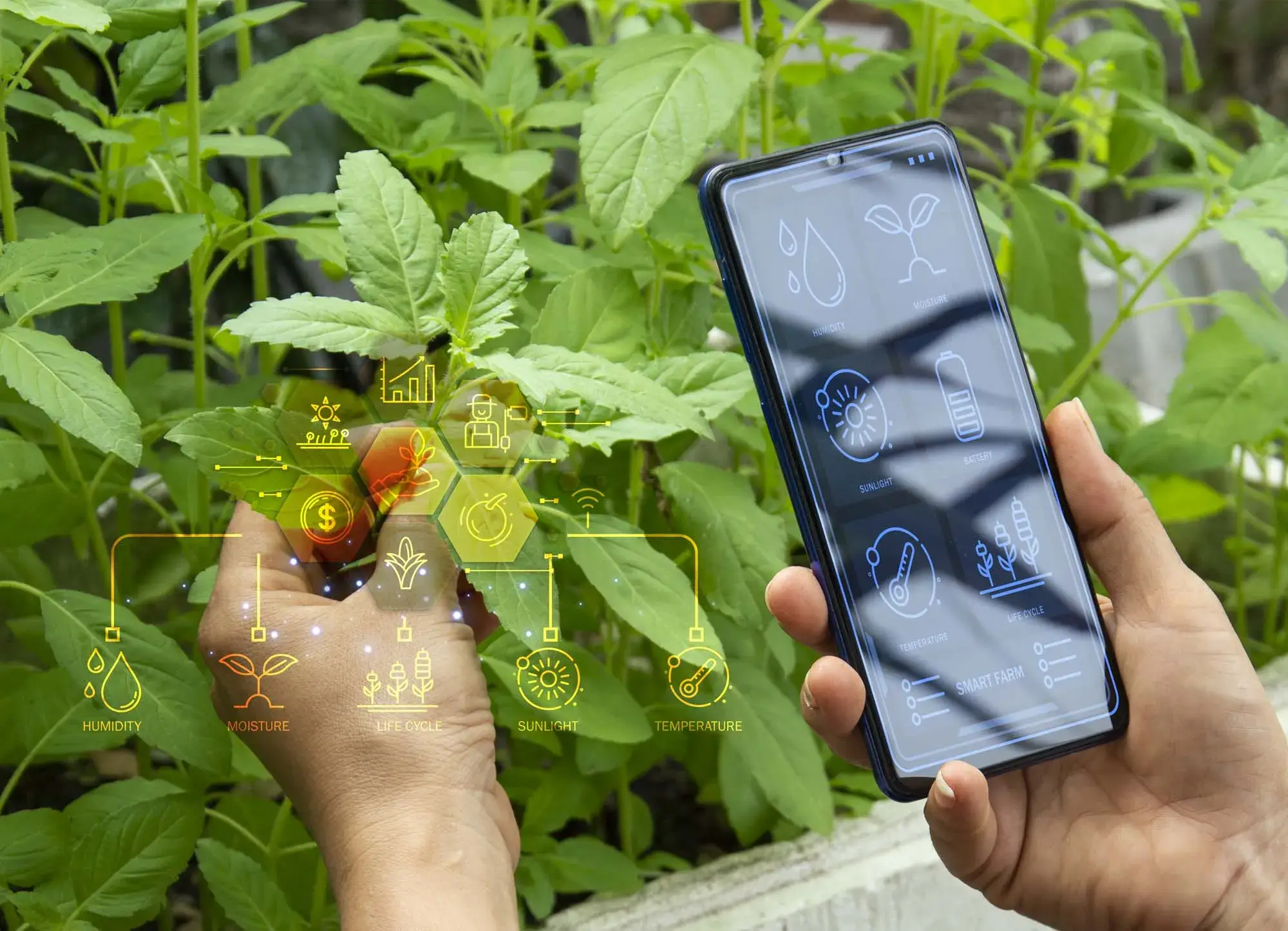
The development of mobile applications for managing agricultural spaces has enabled a completely new and innovative way to monitor plant growth, meet their specific needs, and improve conditions for optimal growth all through the use of a smartphone. These applications leverage the latest technological innovations, such as the Internet of Things (IoT), sensors, and artificial intelligence, making garden management easier, more efficient, and accessible to everyone. Whether it’s urban gardens, balcony plants, or traditional gardens, these technologies empower anyone to confidently and easily care for their green space.
The development of mobile applications for managing agricultural spaces heavily utilizes the potential of the Internet of Things (IoT), a technology that allows different devices and sensors to connect to the internet. By linking to smart devices, such as soil moisture sensors, temperature sensors, light sensors, and soil pH monitors, mobile applications allow users to track conditions in their agricultural space in real-time. Through these apps, users can easily get information on when and how to water plants, when to add nutrients, or when to adjust lighting for the plants.
Plant Growth Tracking
One of the basic functions of mobile applications for agriculture is tracking plant growth. Users can record data about their plants, such as the planting date, plant type, and specific care requirements. Some apps allow users to photograph plants and input data, enabling them to track progress over time. These applications use this information to provide personalized advice and recommendations on how to optimize plant growth based on their specific needs.
Plant Care Notifications
One of the most useful features of mobile applications for agricultural spaces is notifications. Apps can send reminders and alerts to users when certain actions are needed for plant care. For example, a notification about low moisture levels in the soil or the need for additional light allows users to address the issue before it negatively impacts the plants. Notifications can also be related to seasonal changes and specific conditions, such as reminders on the best time to transplant, prune, or water certain plants.
Remote Device Management
Mobile applications allow users to remotely control devices used in agriculture. For example, linking the app to an IoT-based irrigation system enables users to automatically control the watering system. The apps can monitor soil moisture and activate irrigation only when necessary, preventing overwatering and reducing water consumption. Additionally, apps can manage lighting, fans, or heaters in greenhouses, ensuring that plants have optimal conditions for growth.
Sensors and Data Analysis
Mobile applications are often connected to plant monitoring sensors, such as moisture sensors, temperature sensors, soil pH sensors, light intensity sensors, and others. These sensors collect data and send it to the app in real-time, allowing users to analyze the conditions in their agricultural space based on the data. For instance, moisture data analysis can indicate when the soil is too dry, and excessive watering may lead to root rot. Data analysis can also help optimize resources such as water and light, reducing costs and improving efficiency.
Personalized Plant Care Tips
One of the most exciting aspects of mobile applications for agriculture is their ability to provide personalized care tips. Based on the data users input, the app can create a care plan for each plant, offering advice on how to best care for specific plant species. The apps use algorithms that take into account the specific requirements for light, temperature, moisture, and pH levels, providing tips that match the needs of each plant.
One of the main reasons for the popularity of mobile applications in agriculture is the rise of urban agricultural spaces, where plants are grown on small areas such as balconies, terraces, and even inside homes. These small spaces have limited resources, so it is crucial to efficiently manage water, light, and space. Mobile applications enable users to optimize the use of available space and track key parameters in real-time, monitoring plant growth and development. Additionally, with these apps, users can precisely adjust irrigation and lighting systems, reducing the need for constant physical supervision. In this way, technology becomes an indispensable tool for efficient and sustainable urban gardening.
Advantages:
Simplicity and Convenience: Using mobile applications allows users to easily manage agricultural spaces, whether they are at home, on-site, or at work. Apps provide easy access to data and real-time plant monitoring.
Precision and Optimization: Apps enable real-time tracking of all relevant parameters, such as soil moisture, temperature, light, and others, allowing precise management of plant needs and optimal production.
Resource Savings: Automation of watering, lighting, and other devices helps reduce resource consumption, such as water and energy, contributing to the sustainability of agricultural production by lowering costs and minimizing environmental impact.
The future of mobile applications in agriculture looks very promising, with anticipated advancements in technologies such as artificial intelligence and advanced data analysis algorithms. These apps will enable the optimization of growth conditions, the recognition of diseases and pests through images, and efficient resource management. Smart agricultural spaces will become more accessible to the wider public, allowing even small-scale farmers and urban agriculture enthusiasts to use advanced tools for greater productivity, sustainability, and cost reduction. Technological development will contribute to more sustainable practices and more efficient use of resources, making agriculture smarter and more eco-friendly.
Mobile applications for managing agricultural spaces represent a significant advancement in the way plant growth is monitored and managed, optimal conditions are created, and resources are efficiently used. By leveraging advanced technologies such as IoT, sensors, and artificial intelligence, these applications allow users to easily track parameters like moisture, light, and temperature, thereby increasing productivity and sustainability.